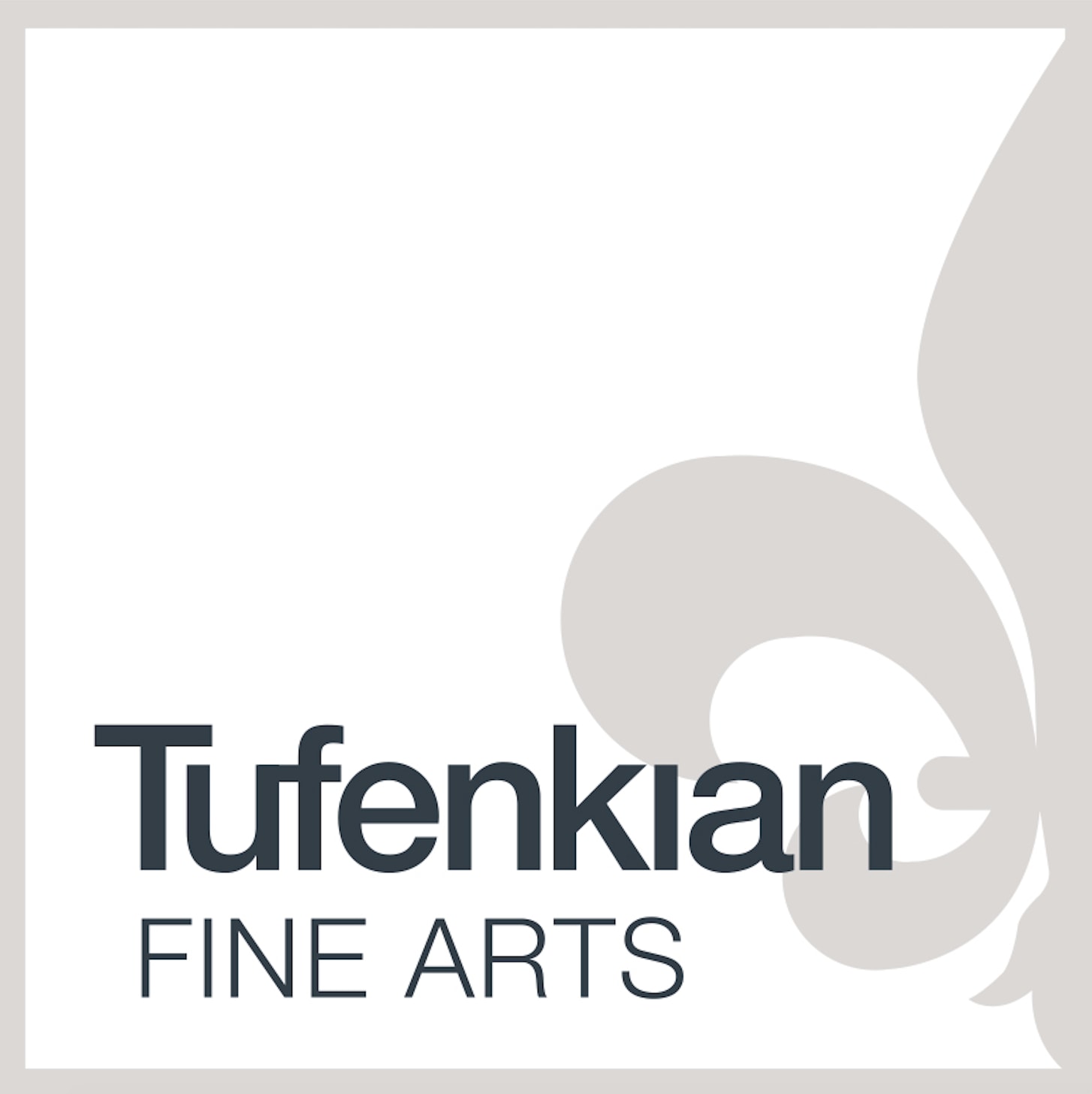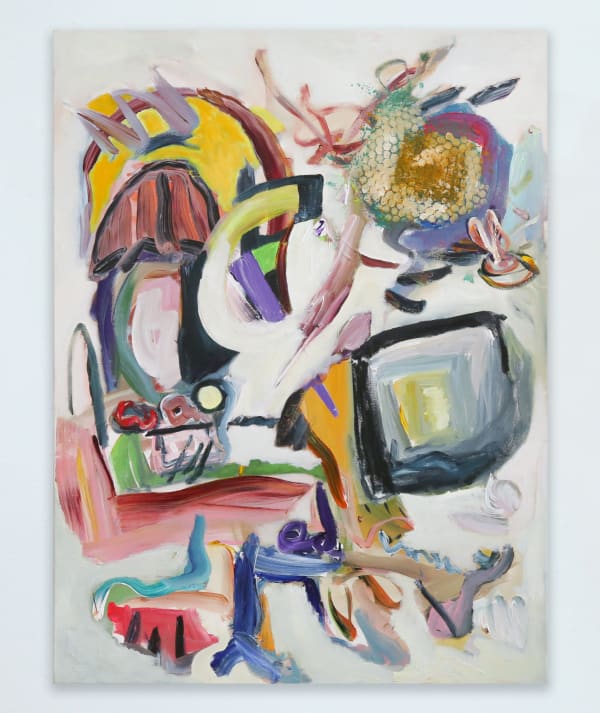Color and Form
Tufenkian Fine Arts is pleased to announce, Color and Form, a group exhibition featuring artworks by Richard Bruland, Fatemeh Burnes, Tanner Goldbeck, Diane Holland, Moko Khachatryan, Astrid Preston, Alain Rogier, Ann Marie Rousseau, Ann Thornycroft, and Laurie Yehia. The exhibition will be on view from January 19th through February 18th, 2023, with an opening reception to be held at the gallery on Saturday, January 21st from 3:00 pm to 6:00 pm.
Color and Form brings together a group of artists whose practices privilege the formal qualities of art-making when creating their distinct visual languages. The complex relationship between color and form offers the organizing principle for this exhibition, with artists grappling with the complexities of personal and communal identity through experimentations in tone, movement, texture, and geometry.
Richard Bruland’s abstract paintings explore the complex relationships between color and texture. Bruland approaches painting spontaneously and intuitively, accumulating and removing layers of paint that are manipulated using a reductive approach. The artist places emphasis on form, allowing the successive layers of acrylic paint to create a marbled effect, which is later sanded down to produce gradual transformations in tone across the surface of the canvas.
Fatemeh Burnes’ work references events, tragedies, and cultural chasms with autobiographical elements examining her childhood in Iran, her father’s imprisonment (under both Shah and Ayatollah), her adolescence as a child bride, and her life as an immigrant. She develops her compositions by extracting, articulating, secreting and exposing new identities. The artist’s spontaneous stains and drips allow patterns to develop and spread across the canvas, weaving together fragments of personal history, emotion, and imagination.
Tanner Goldbeck paintings traverse the artist’s interests in tearing down and repurposing his own existing art by dismantling images and abstracting them into new organic constructions. Goldbeck’s interest in line art is the fundamental structure which binds his practice, with each paintings reflecting a playful tension between control and chaos. In his works, linear elements define space and inherently contain volume while color and textures fight to break down boundaries and add emotion.
Diane Holland’s studio practice involves advanced forms of drawing and collage as well as photographic printing to interpret the relationship that develops between human beings and the media artifacts they create. Her works translate personal experience into imagery that is at once digital and painterly. The source material for her electrostatic and photographic composite alike is drawn from real and imagined experience and engage a collage aesthetic appropriate to the multivalent sensory possibilities of our time.
Moko Khachatryan roots abstract art in the unconscious, unworldly, and spiritual realms. The artist asserts that “abstract art is not drawing or painting, it is a mentality, a lifestyle, and it is a thought process that is deep and philosophical.” Khachatryan's canvases have a meditative, confident, and strong quality, as bright and dark paint expands and drapes along the canvas with a sense of verticality. Her placement of color on the canvas speaks to her visionary dexterousness.
Astrid Preston approaches painting as a synthesis between representation and abstraction, with nature and landscape acting as the artist’s source of inspiration. For Preston, this fusion is sufficient to carry the full freight of emotion and spirituality. It also allows the artist to explore a wide gamut of painterly possibilities: the coexistence of flat space with texture and pixilation; using line, geometry and the effect of a superimposed grid; the repetition and variation of motifs; and the psychological and perceptual effects of color.
Alain Rogier works primarily in fields of painting and collage, creating large scale expressive paintings characterized by dynamic composition and distinct brushstrokes that confront the canvas and demand the viewers’ attention. In the wake of World War II – and in particular the Holocaust, which Rogier’s parents endured – an ethos of doubt and determination, despair and fortitude suffused throughout Western artistic expression; and it is that ethos that Rogier recapitulates with furious eloquence.
Ann Marie Rousseau employs drawing, painting and collage in her ongoing interest in the subject of line. Lines, both seen and unseen, are found everywhere in nature, including in the wind, in the trunks of trees, in the sounds of music, in the light of the sky, and in the waves of water. It is in their shaping and shading, their tonal gradations, thinness or thickness, that her work portrays both a visual rendition of energetic processes of perception, and a display of the inner workings of the conscious and unconscious mind.
Ann Thornycroft’s abstract works embrace a dialogue between formal abstraction and the imagery as extracted from observations of nature. Thornycroft is fascinated by the tension between spontaneous and organic elements, as well as geometric ones. In her works, the contrasting rigidity of the grid and the fluidity of the arcs are enhanced by sweeping washes of transparent paint that inspires meditation.
Laurie Yehia’s practice explores geometries, interconnections and relationships that are elemental to objects and organic life. Elements are aggregated into larger unities. Restrained palette and interplay of structured geometries support focused attention and energetic flow.
-
 Richard Bruland, Argent, 2022
Richard Bruland, Argent, 2022 -
 Fatemeh Burnes, Hush Moss, 2018
Fatemeh Burnes, Hush Moss, 2018 -
 Moko Khachatryan, Long Time No See, 2020
Moko Khachatryan, Long Time No See, 2020 -
 Tanner Goldbeck, Winston, 2021
Tanner Goldbeck, Winston, 2021 -
 Diane Holland, Palimpsestic Metanoia 11, 2021
Diane Holland, Palimpsestic Metanoia 11, 2021 -
 Ann Marie Rousseau, Rose of Tibet, 2022
Ann Marie Rousseau, Rose of Tibet, 2022 -
 Ann Thornycroft, Nuthatch, 2018-2022
Ann Thornycroft, Nuthatch, 2018-2022 -
 Alain Rogier, Untitled 2, 2022
Alain Rogier, Untitled 2, 2022 -
 Laurie Yehia, Interdependence, 2022
Laurie Yehia, Interdependence, 2022



















